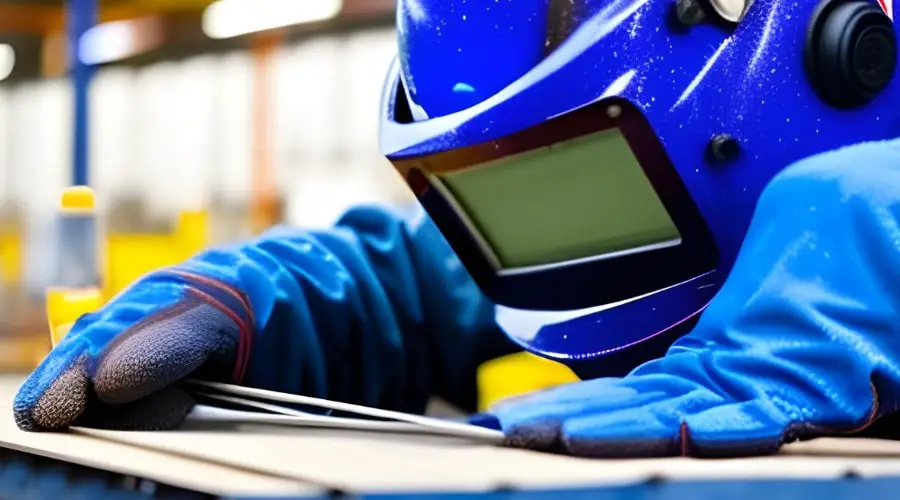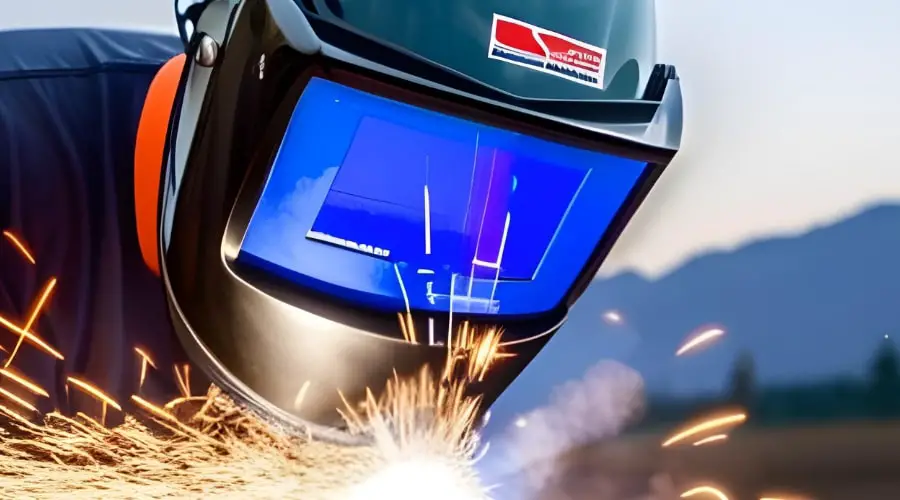Welding helmets, a crucial piece of personal protective equipment (PPE), safeguard welders from various risks associated with the welding process.

Purpose of Welding Helmets
These helmets shield from intense light, ultraviolet (UV), infrared (IR) radiation, sparks, and spatter. They also provide a clear view of the welding process, which is critical for precision and quality control.
Auto-Darkening Welding Helmets: An Overview
Auto-darkening helmets are advanced versions of traditional helmets. They come equipped with electronic filter lenses and are designed to protect your eyes without the need to lift your helmet constantly.
The Science Behind Auto-Darkening Helmets
How Auto-Darkening Helmets Work
Auto-darkening helmets house a unique lens that can adjust its darkness level depending on the intensity of the welding arc.
The Role of Glass in Auto-Darkening Helmets
The glass in these helmets is more than a mere shield; it’s a complex system that provides visibility and protection simultaneously.
Types of Glass Used in Auto-Darkening Helmets
Liquid Crystal Display (LCD) Glass
LCD glass is used in the auto-darkening filter (ADF). This glass contains liquid crystals that respond to changes in light intensity.
Filter Glass
The filter glass shields your eyes from harmful UV and IR radiation.
Protective Glass
The outer and inner cover plates, made of protective glass, prevent physical damage to the LCD and filter glass.
Advantages of Using Auto-Darkening Helmets
Auto-darkening helmets significantly enhance productivity, safety, and the quality of work.
Selecting the Right Auto-Darkening Helmet
Factors to Consider
When choosing an auto-darkening helmet, consider factors like lens reaction time, shade range, power source, and comfort.

The Future of Auto-Darkening Helmets
With technological advancements, auto-darkening helmets will likely become more efficient and user-friendly in the future.
Welding helmet specifications
When it comes to choosing a welding helmet, several specifications are important to consider. Here are some of the primary ones:
- Type of Lens: Traditional passive lens or auto-darkening lens.
- Lens Shade Number: Indicates the darkness level of the lens. For example, a shade number between 8 and 13 is suitable for most welding applications.
- Lens Reaction Time: This is crucial for auto-darkening helmets. It indicates how quickly the lens will darken once the welding arc is detected. The faster, the better for eye protection.
- Viewing Area: The size of the viewing area determines how much of your work area is visible while wearing the helmet. A larger viewing area can provide a better view of your work but may also make the helmet bulkier.
- Adjustability Features: Features like adjustable sensitivity and delay controls can help customize how the helmet responds to the welding arc.
- Power Source: Auto-darkening helmets can be powered by replaceable batteries, solar power, or a combination of both.
- Weight: A lighter helmet can reduce neck strain and increase comfort during long welding sessions.
- Comfort and Ergonomics: Consider the design of the helmet and if it has adjustable headbands or padding for added comfort.
- Durability and Material: The helmet should be sturdy and made from durable materials to withstand the harsh conditions of welding.
- Compliance with Safety Standards: The helmet should meet relevant safety standards, such as ANSI Z87.1 in the USA.
Remember, the right specifications depend on your specific needs and the type of welding you do. Always consider safety, comfort, and functionality when choosing a welding helmet.
Frequently Asked Questions
How does the auto-darkening feature work?
The auto-darkening feature works through a special lens, often made of LCD glass, which reacts to changes in light intensity. When the welding arc is struck, sensors in the helmet trigger the lens to darken, protecting the welder’s eyes.
What types of glass are used in an auto-darkening welding helmet?
Auto-darkening welding helmets typically use three types of glass: LCD glass in the auto-darkening filter, filter glass to shield against harmful radiation, and protective glass for the outer and inner cover plates.
Why are auto-darkening welding helmets advantageous?
Auto-darkening welding helmets offer several benefits, including increased productivity, enhanced safety, and improved work quality. They eliminate the need to constantly lift your helmet, allowing you to focus better on your welding work.
What factors should I consider when choosing an auto-darkening helmet?
When selecting an auto-darkening helmet, consider the lens reaction time, shade range, power source, adjustability, comfort, and the type of welding tasks you’ll be performing.
Conclusion
With their unique glass components, auto-darkening welding helmets offer unparalleled safety and convenience. Remember to select a helmet that suits your welding needs to ensure optimum productivity and safety.
Helmetslab is a website that focuses on providing in-depth reviews and information about different types of helmets, including motorcycle helmets and others helmets. I am writing a post with proper research on the info that helps helmet users.
